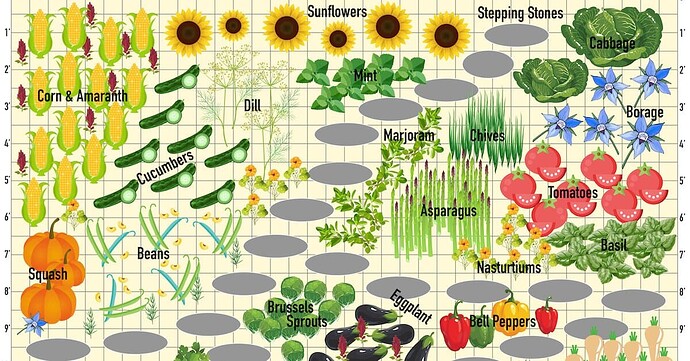There are so many benefits of companion planting, some of which I’ve already mentioned above. Aside from making nutrients available to other plants (and thus making them taste better), companion planting also achieves the following (2):
-
Minimizes Risk
If one crop fails or is affected by harsh weather, pests or disease, the overall yield of your plot may be increased by limiting the spread. To minimize risk, you’ll want to focus on creating the best natural growth patterns and diversity in your space. Avoid large monocultures (for example, a giant plot of tomatoes in one section), and instead focus on polycultures that mimick the way plants would grow in nature. -
Crop Protection
Companion planting can offer shelter from harsh weather (like lots of wind or too much sun) to more delicate plants. Growing delicate plants next to more heartier ones that have the foliage and strength to withstand such conditions will guarantee the growth success of your smaller plants. -
Trap Cropping
Companion planting also offers the best organic pest management. If one crop is more susceptible to pest infestation, try planting beneficial plants next to that crop that the pests despise. This will assist in protecting the pest-vulnerable plants. -
Positive Hosting
By planting your fruit and veggies next to plants (like certain flowers) that produce a surplus of nectar and pollen, you can increase the population of beneficial insects while helping you manage your harmful pest population

